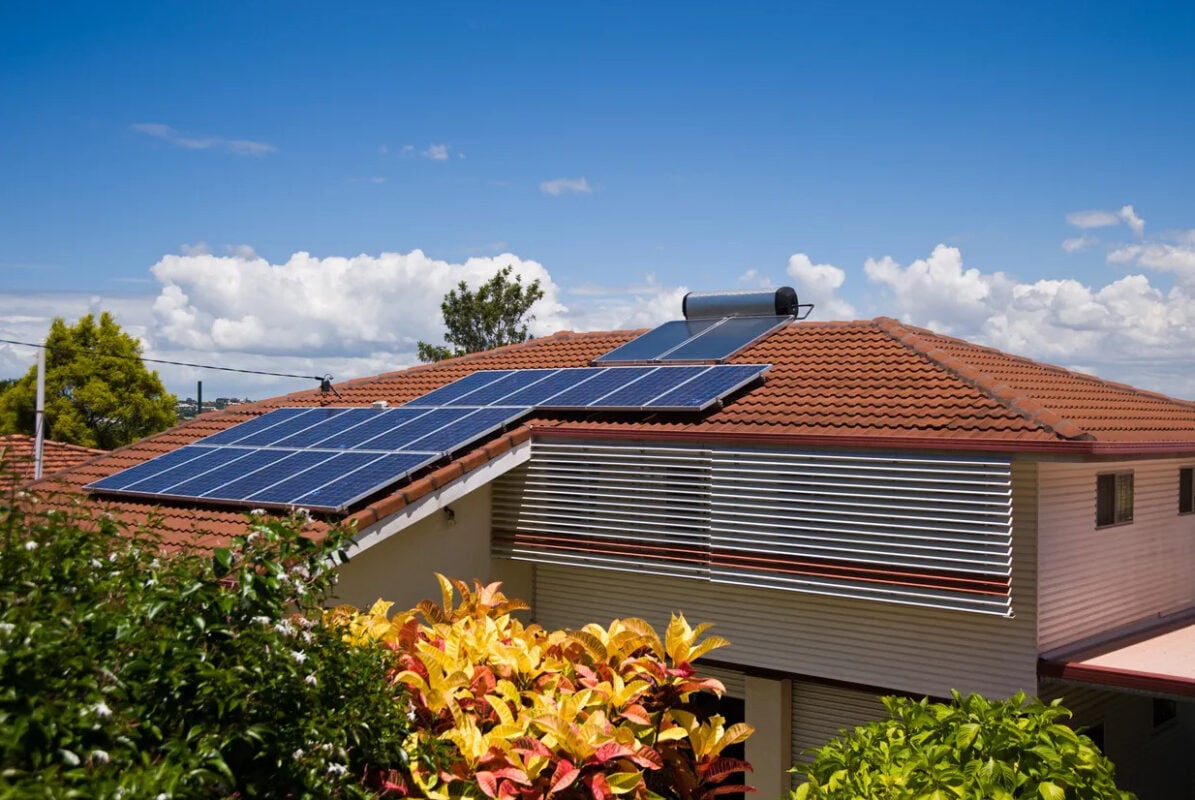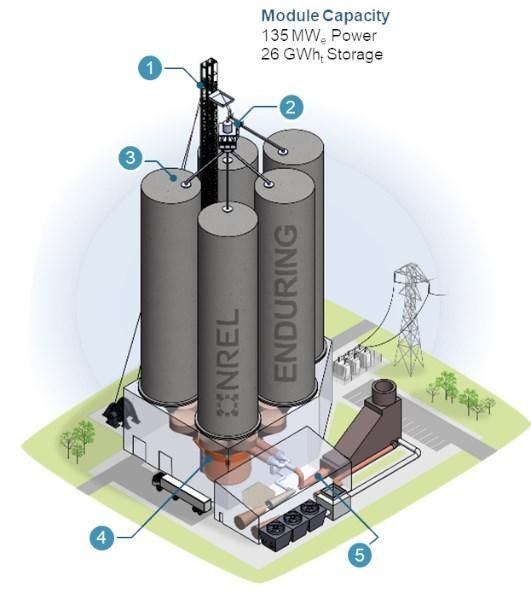From ‘greenwashing’ to ‘greenhushing,’ clean energy momentum advances despite political roadblocks – Fortune

Report on the Global Energy Transition and Sustainable Development Goals
Executive Summary
An analysis of industry perspectives from the Fortune Global Forum indicates that the global energy transition is progressing, driven by economic viability and practical applications rather than corporate posturing. Despite political headwinds, corporations are increasingly aligning their strategies with the United Nations Sustainable Development Goals (SDGs), particularly in the pursuit of clean energy, innovation, and climate action. The consensus is that sustainable practices are no longer a cost center but a critical component of risk management and long-term profitability, directly supporting the achievement of the SDGs.
The Economic Case for Advancing the SDGs
From “Greenwashing” to Viable Business Models
A significant shift has been observed from superficial environmental pledges to the implementation of green technologies that offer tangible returns on investment. This practical approach directly contributes to several SDGs:
- SDG 8 (Decent Work and Economic Growth): By demonstrating that green technologies can be more cost-effective, companies are creating sustainable economic models that do not rely on the false dichotomy of environmental protection versus job creation.
- SDG 9 (Industry, Innovation, and Infrastructure): The focus on efficient systems, such as Trane Technologies’ cogeneration units which can be 400% more energy-efficient, exemplifies the innovation required to build resilient and sustainable infrastructure.
- SDG 12 (Responsible Consumption and Production): The core objective is to reduce energy waste, a fundamental principle of sustainable production patterns.
The Financial Impact of Environmental Degradation
The economic consequences of failing to address climate change are substantial. According to the United Nations, the global economy incurs an estimated $900 billion in annual costs due to land degradation, droughts, and other climate-related impacts. These costs manifest as factory shutdowns, supply chain disruptions, and food shortages, underscoring that environmental risk is synonymous with business risk. This directly threatens progress on:
- SDG 2 (Zero Hunger): Climate change disrupts food production and availability.
- SDG 6 (Clean Water and Sanitation): Water shortages are a primary consequence of environmental degradation.
- SDG 15 (Life on Land): The economic cost is a direct measure of the impact on terrestrial ecosystems.
Sectoral Contributions to SDG 7 and SDG 13
The Electric Vehicle (EV) Industry
The EV sector is evolving to prioritize technological advancement over reliance on government subsidies. To accelerate the transition to sustainable transport and advance SDG 13 (Climate Action), the industry is focusing on key areas of innovation:
- Improved battery charging infrastructure and speed.
- Extended driving range capabilities.
- Enhanced vehicle quality and luxury features to drive consumer choice.
This innovation-led approach is critical for making EVs a practical and desirable choice, thereby contributing to the targets of SDG 7 (Affordable and Clean Energy).
The Role of Artificial Intelligence (AI)
Artificial Intelligence presents both a challenge and an opportunity for sustainable development. While data centers are significant energy consumers, AI-driven software management offers a powerful tool for optimization. By leveraging AI to reduce energy waste by 25% or more, industries can make significant strides toward achieving SDG 7 and SDG 12.
Policy and Governance for Sustainable Development
The Need for Long-Term Policy Frameworks
Industry leaders emphasize the critical need for consistent, long-term government policies to support the energy transition. Political volatility creates uncertainty and hampers investment in sustainable technologies. Stable governance is a cornerstone of SDG 17 (Partnerships for the Goals), as it enables effective collaboration between public and private sectors to address global challenges like climate change.
Overcoming Resistance to Change
A primary obstacle identified is the societal resistance to change. Overcoming this requires a concerted effort to educate stakeholders on the economic and environmental benefits of the green agenda. While current political pushback is viewed as a temporary “blip” driven by an older generation, the momentum for change among the world’s youth signals a long-term societal commitment to achieving the Sustainable Development Goals.
Analysis of Sustainable Development Goals in the Article
1. Which SDGs are addressed or connected to the issues highlighted in the article?
The article discusses several issues related to the global energy transition, climate change, and sustainable business practices, connecting to the following Sustainable Development Goals (SDGs):
- SDG 7: Affordable and Clean Energy: The core theme of the article is the “energy transition” and the shift towards “green energy.” It discusses the practical applications of clean energy technologies like efficient cogeneration systems and electric vehicles (EVs), directly aligning with the goal of ensuring access to affordable, reliable, sustainable, and modern energy.
- SDG 9: Industry, Innovation, and Infrastructure: The article highlights the need for technological advancement and innovation in green industries. It mentions Trane Technologies’ development of more efficient systems and Lucid Motors’ focus on advancing EV technology in battery charging and driving range. The discussion on using AI to manage energy consumption in data centers also points to building resilient infrastructure and fostering innovation.
- SDG 12: Responsible Consumption and Production: The emphasis on reducing energy waste is a key point. The statement, “We have to stop wasting energy,” and the mention of AI’s potential to “reduce 25% or more of the energy that’s wasted” directly address the goal of ensuring sustainable consumption and production patterns through resource efficiency.
- SDG 13: Climate Action: The entire context of the energy transition is framed as a response to climate change. The article explicitly mentions the impacts of climate change, such as “land degradation, droughts,” and the associated economic costs, urging for long-term policies to protect the climate.
- SDG 17: Partnerships for the Goals: The article underscores the need for policy coherence to achieve sustainable development. Faisal Sultan’s call for governments to implement “consistent, long-term policies” that are not subject to short-term political changes reflects the importance of strong global and national frameworks to support sustainability goals.
2. What specific targets under those SDGs can be identified based on the article’s content?
Based on the article’s discussion, the following specific SDG targets can be identified:
- Target 7.3: By 2030, double the global rate of improvement in energy efficiency.
- Justification: The article highlights Trane Technologies’ cogeneration systems, which are described as being “400% more energy efficient.” This directly relates to the goal of improving energy efficiency as a practical and cost-effective part of the green transition.
- Target 9.4: By 2030, upgrade infrastructure and retrofit industries to make them sustainable, with increased resource-use efficiency and greater adoption of clean and environmentally sound technologies and industrial processes.
- Justification: The discussion about the EV industry needing to “advance its technologies in battery charging, driving range, and luxury perks” and the use of “AI-controlled software management” to reduce energy waste in data centers are examples of upgrading industries with clean and efficient technologies.
- Target 12.2: By 2030, achieve the sustainable management and efficient use of natural resources.
- Justification: The statement “We have to stop wasting energy” and the potential for AI to “reduce 25% or more of the energy that’s wasted” directly address the efficient use of energy, which is a key natural resource.
- Target 13.2: Integrate climate change measures into national policies, strategies and planning.
- Justification: The call from Lucid Motors’ president for governments to establish “consistent, long-term policies” for the climate, irrespective of “political winds,” directly supports the integration of climate action into national planning.
3. Are there any indicators mentioned or implied in the article that can be used to measure progress towards the identified targets?
Yes, the article mentions or implies several quantitative and qualitative indicators that can measure progress:
- Indicator for Target 7.3 (Energy Efficiency): The article provides a specific metric of “400% more energy efficient” for Trane’s cogeneration systems. This figure serves as a direct indicator of the level of improvement in energy efficiency for a specific technology.
- Indicator for Target 9.4 & 12.2 (Resource Efficiency): The article states that “AI-controlled software management can help reduce 25% or more of the energy that’s wasted.” This percentage represents a quantifiable indicator of increased resource-use efficiency in industries like data centers.
- Indicator for Target 13 (Climate Action): The article mentions that “land degradation, droughts, and other impacts of climate change cost the global economy $900 billion annually.” This monetary value serves as a baseline indicator of economic losses due to climate-related disasters. Reducing this figure over time would indicate progress in mitigating the impacts of climate change.
- Indicator for Target 13.2 (Policy Integration): The call for “consistent, long-term policies” implies a qualitative indicator. Progress could be measured by the number and stability of national policies enacted to support the energy transition and climate goals.
4. SDGs, Targets, and Indicators Table
| SDGs | Targets | Indicators |
|---|---|---|
| SDG 7: Affordable and Clean Energy | 7.3: Double the global rate of improvement in energy efficiency. | Cogeneration systems being “400% more energy efficient.” |
| SDG 9: Industry, Innovation, and Infrastructure | 9.4: Upgrade infrastructure and retrofit industries to make them sustainable… with increased resource-use efficiency and greater adoption of clean… technologies. | Advancement in EV technologies (battery charging, driving range); Use of AI to manage energy in data centers. |
| SDG 12: Responsible Consumption and Production | 12.2: Achieve the sustainable management and efficient use of natural resources. | Reduction of wasted energy by “25% or more” through AI-controlled software. |
| SDG 13: Climate Action | 13.2: Integrate climate change measures into national policies, strategies and planning. | The call for “consistent, long-term policies” for climate; Economic cost of climate impacts at “$900 billion annually” as a baseline to reduce. |
Source: fortune.com
What is Your Reaction?
 Like
0
Like
0
 Dislike
0
Dislike
0
 Love
0
Love
0
 Funny
0
Funny
0
 Angry
0
Angry
0
 Sad
0
Sad
0
 Wow
0
Wow
0



















































.jpg.webp?itok=0ZsAnae9#)

























